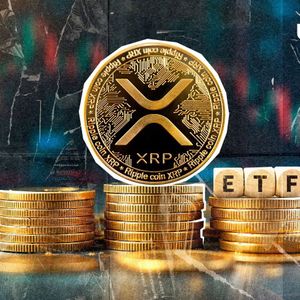Market Frenzy or Manipulation? ALPACA’s Delisting Sparks Trading Chaos on Binance
4 min read
The cryptocurrency token ALPACA unexpectedly became the focus of a trading storm when Binance announced it would be delisting the token. What started as a normal part of an exchange’s work to eliminate low-liquidity and underperforming tokens turned into a burst of high volatility around the ALPACA token, with prices going up over 60 times. This wipeout affected a number of retail investors who had bought the token. A Timeline of Turmoil The volatility started on April 24, when Binance disclosed it would remove four tokens from its platform, including ALPACA. After the announcement, ALPACA’s price skyrocketed by an astounding 150%, activating a sequence of short positions taken by traders wagering that the beleaguered token was doomed. This initial spike made it seem to many market operators that something truly heroic was afoot. On April 25, just one day after the events of April 24, Binance took swift action to try to keep things fair for traders. The platform’s staff changed the ALPACA contract funding rate settlement frequency not once but three times: from every 4 hours to 2 hours; from 2 hours to 1 hour. Apparently, though, these adjustments had the opposite effect of what was intended. Instead of making trades fairer, they seem to have made trades trade faster. On April 26, ALPACA surged again—by another 175%—before being heavily shorted once more. Every surge created the illusion of opportunity, drawing in even more traders to the overbought token. But behind the scenes, a far more coordinated effort appeared to be underway. By April 29, Binance had raised the funding rate to an amazing 4% per hour—an extraordinary move. By April 30, ALPACA had reached a new all-time high, and in a mere four hours, its liquidation volume had topped the entire network, highlighting just how widespread and impactful this trading event had become. 难道下架才是真上架? —— 一纸下架公告暴涨 60 倍,ALPACA 合约 24 小时交易量达 30 亿,直至下架合约持仓 1.1 亿,这场闹剧终于要结束了 简单的时间线复盘 04.24:币安宣布下架 $ALPACA 在内的四个代币,ALPACA 首次暴涨 150% 爆空 04.25:币安先后资金费率结算频率由 4 小时缩短为 2… https://t.co/LdKjDHOQcR pic.twitter.com/sUxTkmPgmt — Ai 姨 (@ai_9684xtpa) April 30, 2025 A Harvesting Mechanism in Disguise? Even if one were to be tempted to explain the price movements of the ALPACA token around the time of an event—like when it was suddenly dropped from the list of tradable tokens on Binance—if we are to take the project team’s own statements at face value, then we are led to the conclusion that a price effect was being caused by the project’s very design. Sommer: So on the side of the team who is essentially orchestrating this, what’s the intent? Why are they trying to create such price effects? Usually, a delisting announcement would destroy demand; hardly any investor would want to purchase a token heading toward an exit. Yet, the planned price increases and following drops somehow managed to entice a different kind of group: short sellers who recently earned profits by zeroing in on weak or failed projects. The reasoning appeared to be perfect—bet against a token that everyone agrees is worthless, and profit from the impending wreckage. But this time, the market makers pulled something different. By pumping the price wholesale (and semi-artificially), they triggered a massive liquidation of shorts, using the auto-liquidation systems of the short sellers to rinse up some unwanted but very real profits. By themselves, none of these operations directly entails selling a single token. Yet if you were to graph the scenario on a chart, well, the whole thing looks pretty darn bearish. The outcome was astonishing. ALPACA’s price soared from a paltry $0.066 to a scintillating $1.47 in a handful of days, and with 24-hour trading volumes blasting off at $3 billion and open interest rocketing to a maximum of $110 million, this was the largest maneuver in the history of cryptocurrency. A System Under Scrutiny The process of delisting at Binance, although based on good intentions, is now under scrutiny. These delistings are supposed to serve as a redirect for liquidity, in order to push low-quality assets towards a better and healthier financial situation. In most cases, these delistings happen and not much is said about them afterwards, which is exactly how it should be. However, in this case, we see that by managing the contracts a certain way, it could be possible to benefit from the situation and have a negative effect on the people holding the token that is about to be delisted. This specific delisting, instead of protecting users from badly-performing assets, turned into a cleverly disguised trap. Here, the retail investors who had no prior warnings were the primary victims. Extreme changes in the funding rates, the crazy price swings that happen far too often, and the almost coordinated liquidation events all point to a systemic loophole that can be gamed if it isn’t closed. Even as the ALPACA affair seems to be winding down, it offers a potent reminder of the high stakes involved in trading cryptocurrency. And forget for a second that the removal of ALPACA at this moment may have served to bolster the price of another Solana-based token, STEP. This is also about safeguards and transparency in the management of token removals. Disclosure: This is not trading or investment advice. Always do your research before buying any cryptocurrency or investing in any services. Follow us on Twitter @nulltxnews to stay updated with the latest Crypto, NFT, AI, Cybersecurity, Distributed Computing, and Metaverse news !

Source: NullTx



